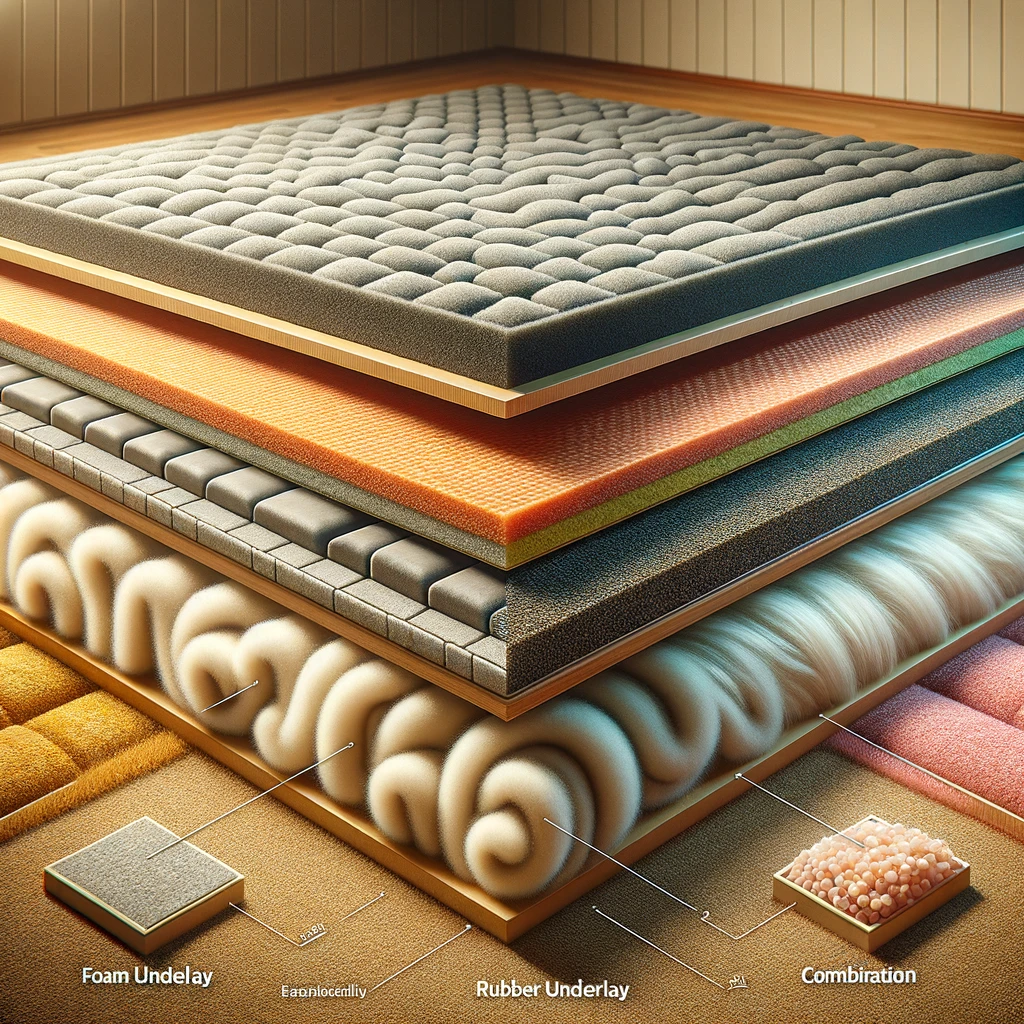Carpet Underlay Types and Installation
Types of Carpet Underlay
When it comes to carpet underlay, various types are available, each offering unique benefits. Understanding these options can help you choose the best underlay for your needs.
1. Underlay Carpet Types
- Foam Underlay: Known for its affordability, foam underlay provides basic support and comfort. It's a budget-friendly choice suitable for low-traffic areas.
- Rubber Underlay: Rubber underlay is highly durable and offers excellent support. It's ideal for high-traffic areas and can extend the lifespan of your carpet.
- Felt Underlay: Felt underlay provides a plush and comfortable feel underfoot. It's a great choice for bedrooms and areas where comfort is a priority.
- Combination Underlay: This type combines different materials to offer a balance of support, comfort, and durability. It's a versatile option suitable for various areas of your home.
2. Best Carpet Underlay
Choosing the best carpet underlay depends on your specific requirements. Here are some recommendations:
- For Comfort: If comfort is your priority, opt for a thick felt or foam underlay.
- For Durability: Rubber underlay is an excellent choice for high-traffic areas.
- For Soundproofing: If you want to reduce noise, consider a soundproof underlay with a rubber component.
- For Thermal Insulation: Thermal underlay can help maintain a consistent temperature in your home.
Understanding the characteristics of each type can help you make an informed decision based on your needs and budget.

3. Carpet Underlay Thickness
The thickness of carpet underlay can vary, and it's an important consideration. Thicker underlay provides better cushioning and insulation. Here's a general guide:
- 6mm-8mm: Suitable for low-traffic areas.
- 9mm-10mm: Ideal for most residential areas.
- 11mm and above: Offers premium comfort and is perfect for bedrooms and living rooms.
Consider your specific requirements and the room where the carpet will be installed when choosing the thickness of your underlay.
How to Install Carpet Underlay
Installing carpet underlay is a crucial step in achieving a comfortable and long-lasting carpeted floor. In this section, we'll guide you through the steps to ensure a successful installation.
1. Gather Your Tools
Before you begin, make sure you have the necessary tools and materials:
- Carpet underlay rolls
- Craft knife
- Measuring tape
- Double-sided carpet tape
- Duct tape
- Staple gun (for wooden floors)
Having the right tools on hand will make the installation process smoother.
2. Prepare the Surface
Ensure the floor surface is clean, dry, and free from debris. Repair any damage or unevenness in the subfloor before proceeding.
3. Roll Out the Underlay
Unroll the carpet underlay across the floor, allowing it to run up the walls by a few inches. Trim any excess underlay using a craft knife.
4. Join Seams Securely
If your room is larger than the width of the underlay roll, you may need to join multiple pieces. Use double-sided carpet tape to secure the seams, ensuring they are flush and do not overlap.
5. Secure the Underlay
To prevent the underlay from shifting, use duct tape to secure the edges to the floor. For wooden floors, you can staple the underlay in place.
6. Ready for Carpet Installation
With the underlay securely in place, your floor is now ready for carpet installation. Follow the manufacturer's instructions for installing your chosen carpet type.
Joe Rugs - Carpet Expert
Hello! I'm Joseph Rugs, the founder of CarpetJoe.com and your guide through the intricate world of carpets. Born and raised in London with a deep-rooted passion for art and culture, I've explored the globe to bring the rich tapestry of carpet weaving right to your screen. My academic background in arts and humanities from Oxford has fueled my curiosity, leading me to uncover the stories behind every knot and weave. As a family man, my adventures are shared with my loved ones, enriching our lives with every piece of art we encounter. Join me as we explore the beauty and craftsmanship of carpets together.
Common Carpet Pests
Explore Carpet Cleaning Methods
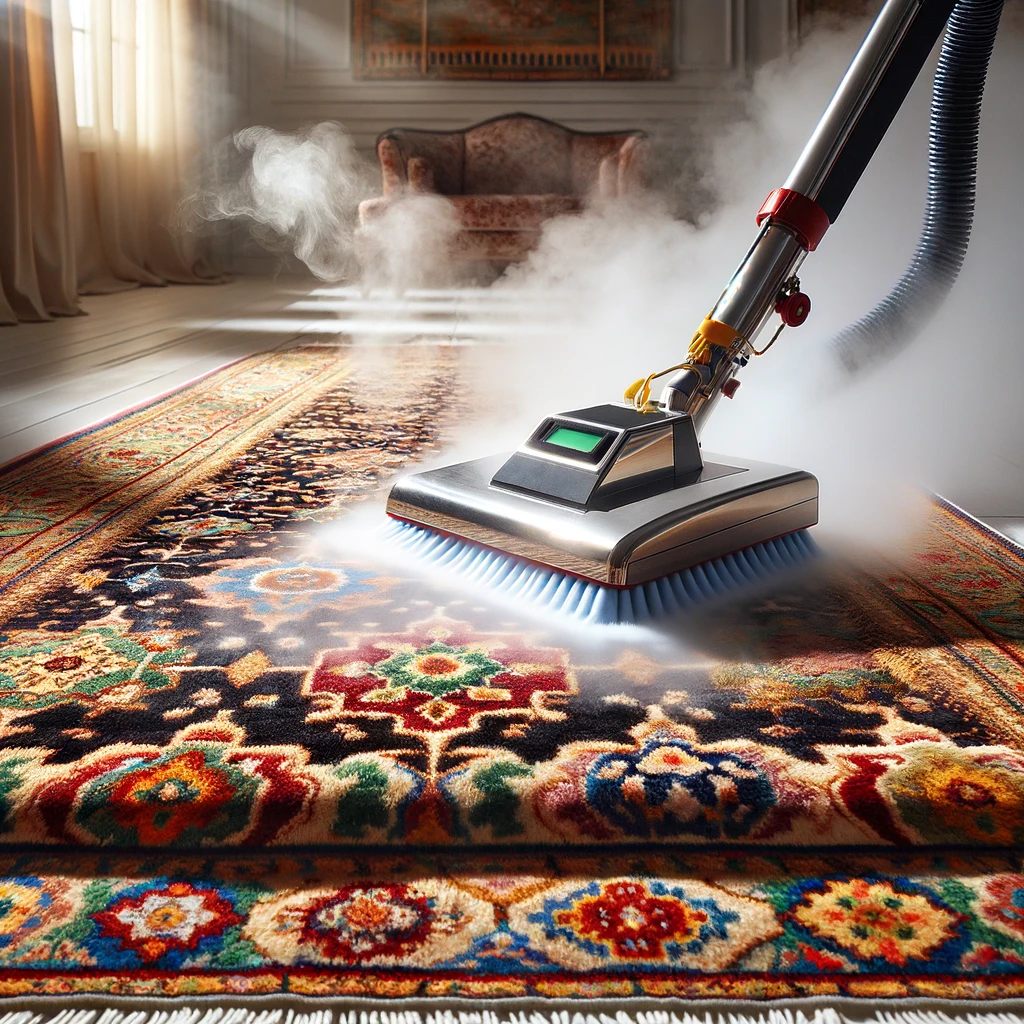
Steam Cleaning
Steam cleaning for Persian rugs involves a gentle yet effective method of deep cleaning, removing dirt and allergens without damaging delicate fibers, preserving beauty and longevity.
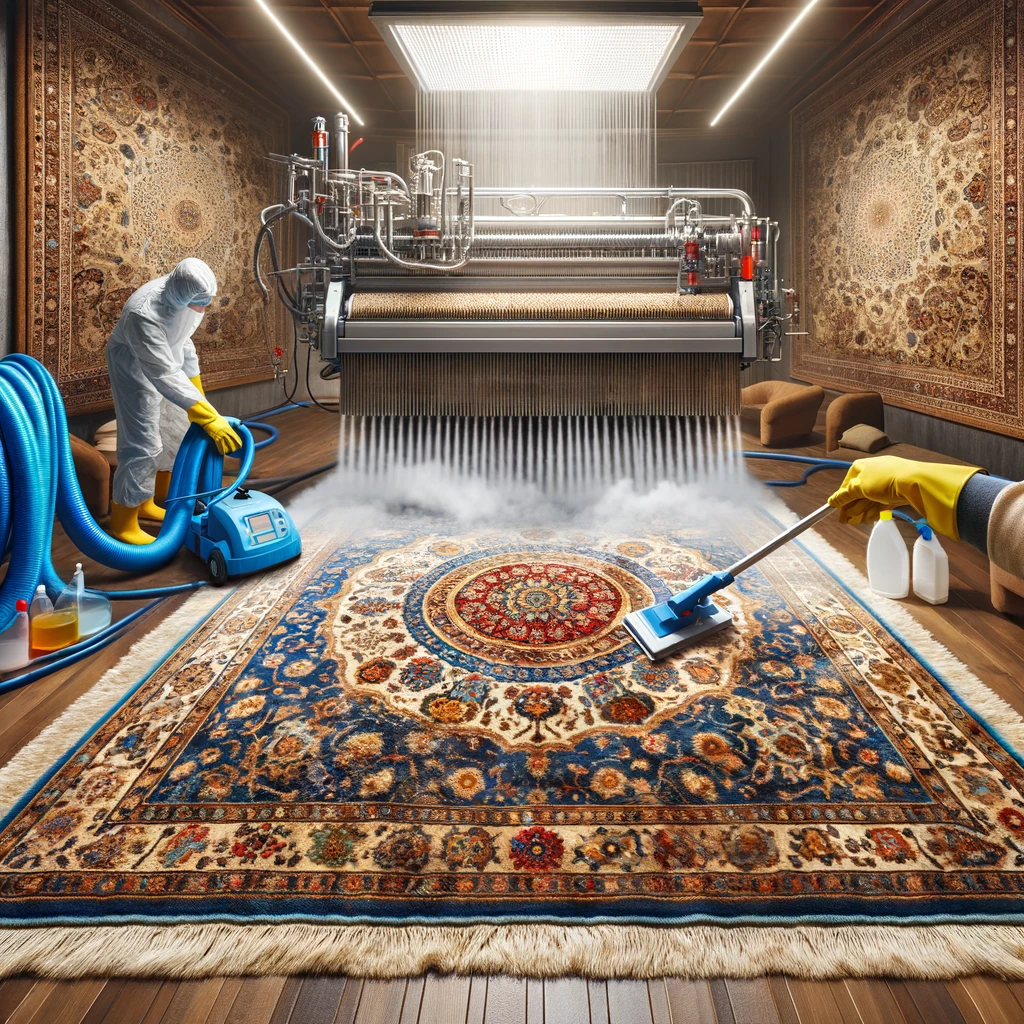
Deep Cleaning
Deep cleaning Persian rugs requires specialized techniques to remove deeply embedded dirt and restore their vibrant colors, ensuring the preservation of their intricate designs and durability.
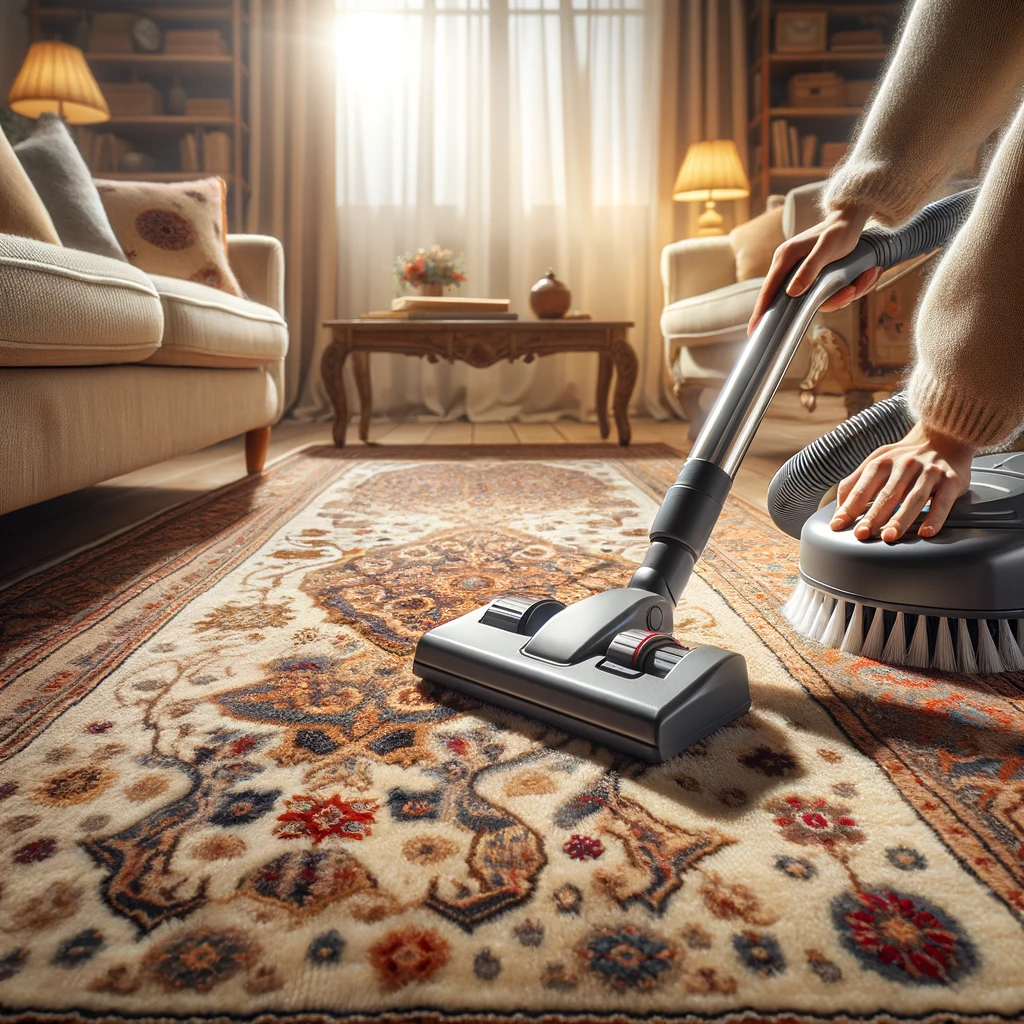
Vacuum Cleaning
Vacuum cleaning for Persian rugs focuses on removing surface dust and debris gently, protecting the rug's intricate patterns and delicate fibers from wear and damage.

Stain Removal
Stain removal for Persian rugs addresses common damage issues like spills and spots, using careful techniques to preserve colors and fibers while eliminating blemishes.
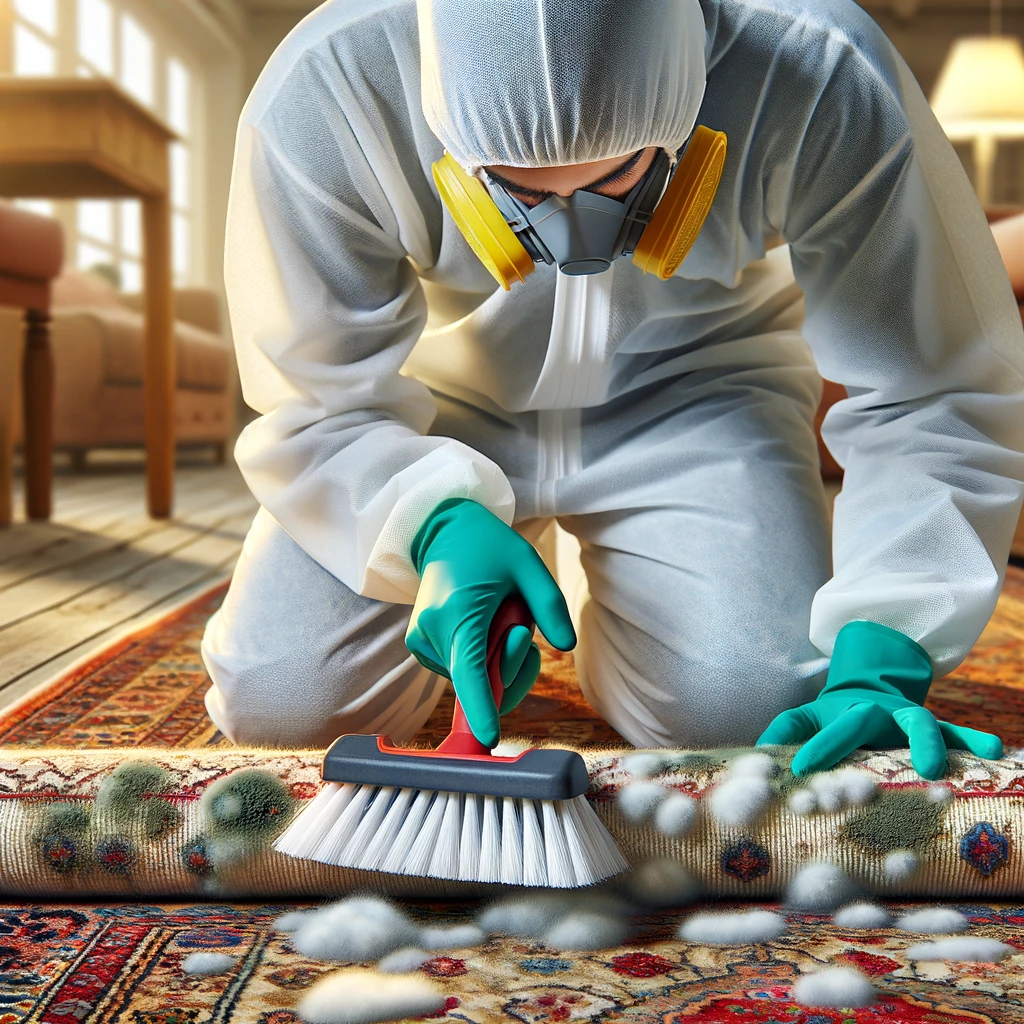
Mold Removal
Mold removal for Persian rugs tackles common damage issues such as mildew and fungus, employing safe methods to eradicate growth and restore rug health without harm.
Carpet Repair & Restoration Guides
Carpet damage can range from minor issues like small burns or stains to more significant problems such as large tears or widespread wear.
Identifying the type of damage is the first step in determining the most suitable repair method.
Master carpet repair with our guides. Learn about fixing burns, holes, and wear in carpets and rugs, including DIY patch repairs and professional restoration tips.
Frequently Asked Questions
The cost of carpet underlay can vary widely based on factors such as the type, thickness, and quality. On average, you can expect to pay between £2 and £5 per square meter for standard underlay. Premium underlay may cost more. It's important to consider the overall value and longevity of the underlay when making your choice.
For stairs, it's essential to choose a durable and dense underlay that can withstand heavy foot traffic. Rubber underlay is an excellent choice for stairs due to its durability and support. It can help prevent premature wear and tear on your carpet.
The lifespan of carpet underlay depends on factors like the quality of the underlay, the amount of foot traffic it receives, and how well it's maintained. On average, good-quality underlay can last between 10 and 15 years. Regular vacuuming and proper care can extend its longevity.
Using a carpet pad or underlay under an oriental rug is recommended. It provides several benefits, including preventing the rug from slipping, protecting the floor beneath, and adding extra cushioning. A non-slip rug pad is ideal for keeping your oriental rug in place.
Choosing the right thickness depends on your preferences and the room's intended use. Thicker underlay provides more cushioning and insulation, making it ideal for bedrooms and living areas. Thinner underlay is suitable for areas with lower foot traffic, such as closets.
Yes, certain types of carpet underlay, such as those with rubber components, can help with soundproofing. They absorb impact noise and reduce the transmission of sound between floors. If noise reduction is a priority, consider a soundproof underlay.
To lay carpet underlay correctly, follow these steps:
- Prepare the floor by ensuring it's clean and smooth.
- Unroll the underlay and trim any excess.
- Secure seams with double-sided carpet tape.
- Use duct tape or staples to secure the underlay to the floor.
- Proceed with carpet installation following the manufacturer's guidelines.
Proper installation ensures the underlay functions effectively.
Thermal carpet underlay is designed to provide insulation and retain heat. It helps maintain a comfortable temperature in your home by preventing heat loss through the floor. This type of underlay is ideal for rooms where warmth is a priority, such as bedrooms and living rooms.

